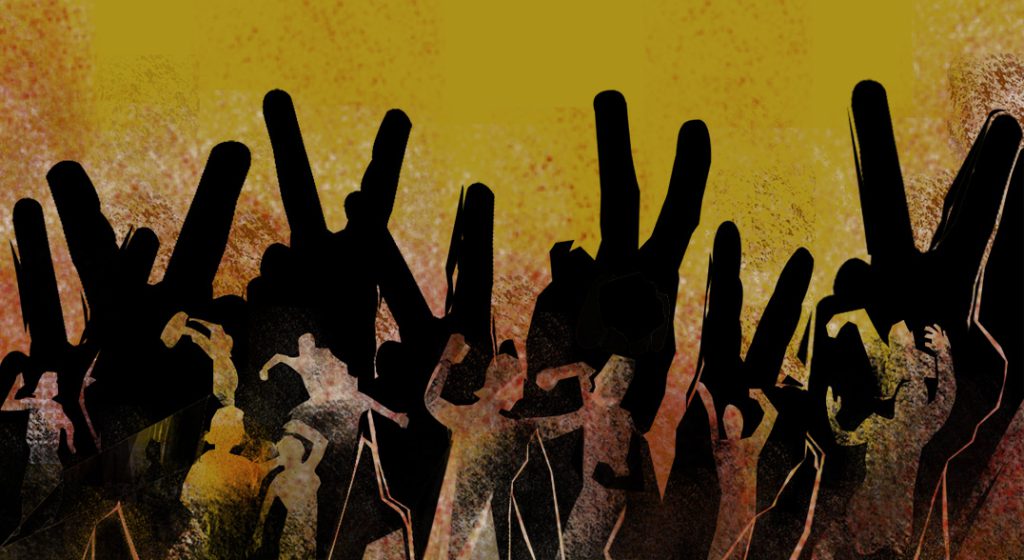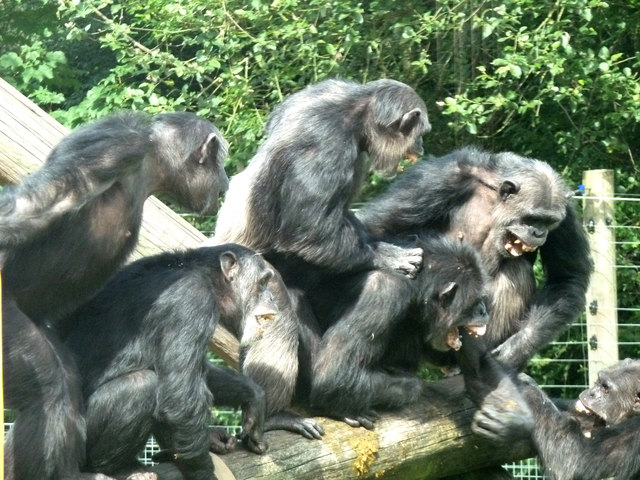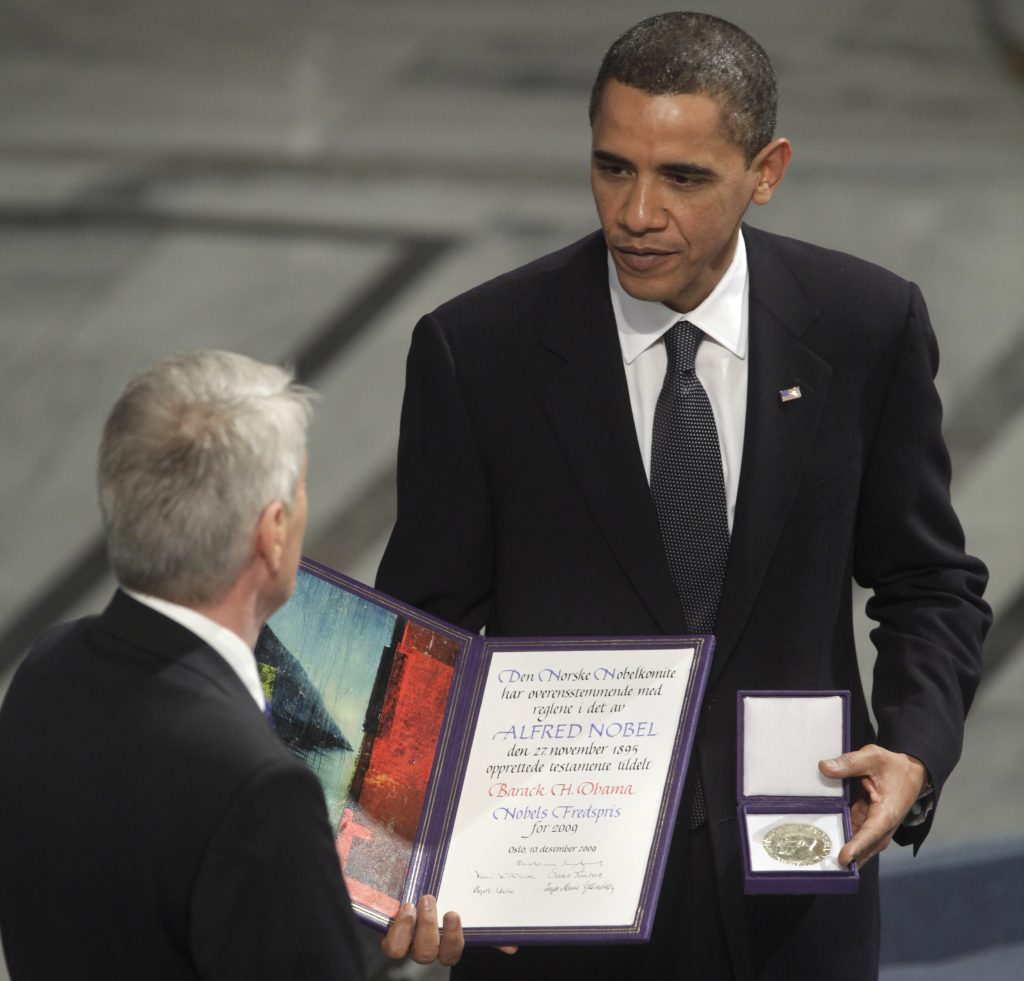Is Violence Embedded in Our DNA?

After carefully dissecting out the muscles of a disembodied arm, biologist David Carrier and his team tied fishing lines from each isolated tendon to a guitar tuner knob, allowing the researchers to move the fingers around like ghastly marionettes. Using this setup, they could measure the varying strain on the bones when the hand was arranged in different positions and slammed into a padded dumbbell weight. Each limb took a week to prepare, but Carrier, who is head of the Evolutionary Biomechanics Lab at the University of Utah, wanted to get the study right. He had a point to prove—that humankind has evolved for violence.
The 2015 paper that resulted from Carrier’s research showed that a buttressed fist, one with the thumb closed against the index and middle fingers, provides a safer way to hit someone with force. Given that none of our primate cousins have the ability to make such a fist, Carrier and his co-authors propose that our hand proportions may have evolved specifically to turn our hands into more effective weapons. The research is just the latest in a string of studies Carrier has conducted to define “a suite of distinguishing characteristics that are consistent with the idea that we’re specialized, at some level, for aggressive behavior.” Through experiments with live fighters as well as with cadaver arms, he and his colleagues have reimagined our faces, hands, and upright posture as attributes that evolved to help us fight one another.
Carrier’s conclusions have proven contentious: Critics argue that just because a buttressed fist protects the hand during a punch doesn’t mean the hand evolved that way for this specific reason any more than the human nose evolved to hold up glasses. But people’s discomfort with Carrier’s hypothesis goes beyond this critique. The work is sensitive because it tackles a controversial question: Are humans biologically designed for violence, or are violence and war cultural phenomena?
While many biological anthropologists have, like Carrier, arrived at the former conclusion, albeit for different reasons, cultural anthropologists tend to argue for the latter. “A major take-away from the anthropological literature is that humans have the potential, which is different from the tendency, to be violent,” says Alisse Waterston, president of the American Anthropological Association (AAA), and a cultural anthropologist at the City University of New York who studies violence.
But ever since the 17th-century thinker Thomas Hobbes famously described the lives of humans in their “natural condition” prior to the development of civil society as “nasty, brutish, and short,” there have been scholars such as Carrier who suggest that violence has molded our species—that it’s been etched into our bodies and minds.
Theories can encompass both biological and cultural viewpoints, of course, but in this debate, the conflict between the different perspectives has at times verged on the intensity of one of Carrier’s fistfights. The debate is nuanced, and it cuts right to the heart of humanity’s perception of itself—as well as our collective desire for world peace.
The idea of a biological imperative for violence achieved prominence in the 1970s with the emergence of a new discipline: sociobiology. While the concept of violence being intrinsic to human nature had been around since Hobbes’ time, sociobiologists (and later evolutionary psychologists) specifically argued that behaviors, not just physical characteristics, can be shaped by natural selection. This meant that common behaviors like violence could be genetically determined.
The debate … cuts right to the heart of humanity’s perception of itself—as well as our collective desire for world peace.
At the heart of the popularization of this idea stands Napoleon Chagnon, sometimes called America’s “most controversial anthropologist.” Chagnon caused an uproar in 1968 when he published observations of the Yanomami people of Venezuela and Brazil, describing them as a “fierce people” who were in “a state of chronic warfare.” He asserted that Yanomami men who kill have more wives and therefore father more children: evidence of selection for violence in action. This represented a wild divergence from the anthropological consensus. Anthropologists criticized virtually every aspect of Chagnon’s work, from his methods to his conclusions. But for sociobiologists, this was a prime example that supported their theories.
Around the same time, David Adams, a neurophysiologist and psychologist at Wesleyan University, was inspired to investigate the brain mechanisms underlying aggression. He spent decades studying how different parts of the brain reacted when engaged in aggression. By using electrical stimulation of specific brain regions and through creating various lesions in mammalian brains, he sought to understand the origins of different antagonistic behaviors. But Adams found the public response to his work over the top: “The mass media would take [our work] and interpret it like we’d found the basis for war,” he says. Tired of the way his results were being interpreted by both the media and the public, Adams eventually switched gears entirely.
In 1986, Adams gathered a group of 20 scientists, including biologists, psychologists, and neuroscientists, to issue what became known as the Seville Statement on Violence. It declared, among other things, that “it is scientifically incorrect to say that war or any other violent behavior is genetically programmed into our human nature.” The statement, later adopted by UNESCO, an agency of the United Nations that promotes international collaboration and peace, was an effort to shake off the “biological pessimism” that had taken hold and make it clear that peace is a realistic goal. The press, however, was not so enthralled by Adams’ new tack. “This is not interesting for us,” one major news network responded when he asked if they would cover the Seville statement, he recalls. “But when you do find the gene for war, call us back.”
The Seville statement by no means ended the academic debate. Since its release, various prominent researchers have continued to advance biological arguments for our innate tendency towards violence, in contradiction of both the statement and the views of many cultural anthropologists. In 1996, Richard Wrangham, a biological anthropologist and primatologist at Harvard University, published his popular book Demonic Males, co-authored with science writer Dale Peterson, that argued we are “the dazed survivors of a continuous 5-million-year habit of lethal aggression.”
Central to this proposition is the idea that men, or “demonic males,” have been selected for violence because it confers advantages on them. Wrangham argued that murderous attacks by groups of male chimpanzees on smaller groups increased their dominance over neighboring communities, improving their access to food and female mates. Perhaps, like chimpanzees, ancestral men fought to establish dominance by killing rivals from other groups, thus securing greater reproductive success. In Wrangham’s view, such behavior selected for males who are endowed with a certain desire for violence when the conditions are right: “the experience of a victory thrill, an enjoyment of the chase, a tendency for easy dehumanization (or ‘dechimpization’).”
“I think the growing evidence about innate propensities for violence have shown [the Seville statement] rather clearly to be simplistic and exaggerated at best,” says Wrangham.
A key proponent of this biological view is psychologist Steven Pinker, another Harvard researcher whose writing, particularly his 2011 book The Better Angels of Our Nature, has significantly shaped the conversation about human violence in recent years. In his 2002 book The Blank Slate, Pinker wrote, “When we look at human bodies and brains, we find more direct signs of design for aggression,” explaining that men in particular bear the marks of “an evolutionary history of violent male-male competition.” One widely quoted estimate by Pinker places the death rate resulting from lethal violence in nonstate societies, based on archaeological evidence, at a shocking 15 percent of the population.
Physical indicators, such as those studied by Carrier, can be viewed as evidence that selection for violence-enabling features has taken place. Carrier sees “signs of design for aggression” everywhere on the human body: In a recent paper, co-authored with biologist Christopher Cunningham from Swansea University, he suggests that our foot posture is an adaptation for fighting performance. He has even proposed, as part of his fist-fighting hypothesis, that the more robust facial features of men (as opposed to women) evolved to withstand a punch.
“I really don’t think it’s debatable that aggression has shaped human evolution,” agrees Aaron Sell, an evolutionary psychologist at Griffith University in Australia, who has explored the “combat design” of human males. Sell has compiled a list of 26 gender differences, ranging from “greater upper body strength” to “larger sweat capacity,” that suggest adaptation for fighting in human males. “It is a very incomplete list though,” he adds.
Many anthropologists remain unconvinced by those who suggest that there is an evolutionary advantage in violence and a deep biological explanation for conflict. “They’re just barking up the wrong tree,” says Douglas Fry, an anthropologist who specializes in the study of war and peace at the University of Alabama, Birmingham. “We are well designed to prevent ourselves getting into lethal conflicts and to avoid the actual physical confrontation,” he argues, describing the idea that we are innately predisposed to violence as a cultural belief that is “just plain wrong.”
“David Carrier is an excellent biomechanist who conducts careful and clever experiments,” says Caley Orr, a paleoanthropologist at the University of Colorado School of Medicine. “He’s probably right when he talks about the biomechanical consequences of some of the anatomy, but that is different from resolving what the evolutionary selective pressures were that shaped it in the first place.”
Polly Wiessner, an Arizona State University anthropologist who studies warfare and peacemaking in the Enga of highland Papua New Guinea as well as social networks for risk reduction in the !Kung of the Kalahari Desert, points out another potential problem with Carrier’s logic: “I don’t know of anyone [in traditional societies] who fistfights; people wrestle,” she explains, adding that if they really want to “do someone in,” people in such societies simply use weapons. If punching is uncommon in these societies, it’s reasonable to assume this type of combat wasn’t a key factor in our evolution.
More broadly, if violence and warfare are not ubiquitous throughout traditional societies, this would suggest that these human behaviors are not innate, but rather arise from culture. Fry has extensively examined both archaeological and contemporary evidence, and has documented over 70 societies that don’t make war at all, from the Martu of Australia, who have no words for “feud” or “warfare,” to the Semai of Malaysia, who simply flee into the forest when faced with conflict. He also argues that there is very little archaeological evidence for group conflicts in our distant past, suggesting war only became common as larger, sedentary civilizations emerged around 12,000 years ago—the opposite of Pinker’s conclusions.
Chimpanzees might just be ultra-violent outliers.
As for our primate cousins, according to primatologist Frans de Waal of Emory University, their behavior has been cherry-picked to suit a more violent narrative for humanity. While chimp behavior may well shed light on human male tendencies for violence, de Waal points out that the other two of our three closest relatives, bonobos and gorillas, are less violent than us.
In even the most peaceful human societies, of course, violence in one form or another is not totally unknown, and the same is true of these “peaceful” apes. Nevertheless, it is plausible that instead of descending from chimp-like ancestors, we come from a lineage of relatively peaceful, female-dominated apes, like bonobos. Chimpanzees might just be ultra-violent outliers.
“That our evolutionary success is based largely on our ability to be violent—that’s just wrong,” says biological anthropologist Agustín Fuentes, who is chair of anthropology at the University of Notre Dame in Indiana. “The sum total of data we have from the genetics to the behavioral to the fossil to the archaeological suggests that is not the case.”
Scholars and researchers on both sides of the debate want their work applied to achieve more peaceful societies, and most agree that humans are capable of both great acts of violence and great acts of kindness. Yet from Chagnon onward, there has been a palpable degree of tension between those who hold opposing viewpoints. In an open letter to de Waal in 2005, University of Groningen anthropologist Johan van der Dennen complained of feeling shouted down by the “peace and harmony mafia.”
At issue is the fact that for some a biological explanation suggests that violence is unavoidable. If we accept that violence is inherent, says Fuentes, we start to accept unpleasant behavior as inevitable and indeed natural in ourselves and those around us. “The old adage that ‘violence begets violence’ is true,” says AAA President Waterston. “A society that adopts and is adapted to violence tends to reproduce it, locating and leveraging the resources to do so.”
John Horgan, science journalist and author of The End of War, has been conducting informal surveys with students for years, and he reports that over 90 percent of respondents think we will never stop fighting wars. And when Adams and others conducted their own studies on student attitudes, they observed a worrying effect: There was a negative correlation between the belief that violence was innate and peace activism. Even among those students who were actively campaigning for peace, 29 percent reported that they had previously been put off by “a pessimistic view that humans are intrinsically violent.” Adams predicts that the level of apathy would be higher among those who abstained from activism altogether: “If you think that war is inevitable, why oppose it?” he says.
Such fatalistic attitudes are particularly worrying when held by those in power: They can be used “to justify military budgets, and not seek alternative solutions,” argues de Waal. Even Nobel Peace Prize–winning former U.S. President Barack Obama seems to believe that violence is bred into humanity: “War, in one form or another, appeared with the first man,” he said in his Nobel Prize acceptance speech. With Obama’s entire tenure spent leading a nation at war—albeit war that he inherited from his predecessor—Horgan has wondered if the former president’s personal belief in the “deep-roots theory of war” might have prevented him from more actively seeking peace.
But Obama, like Hobbes and Pinker, has also argued that society is equipped to fight the supposed biological imperative for violence: We have increasingly created codes of law and philosophies to limit violent acts, thanks to our capacity for empathy and reason. In The Better Angels of Our Nature, Pinker elegantly charts what he sees as a decline in violence, from the frightening 15 percent of violent deaths in nonstate societies down to 3 percent of deaths attributed to war, genocide, and other human-made disasters in the 20th century—a period that includes two world wars.
Waterston, exasperated by “the tired assumption that violence is rooted in ‘human nature,’” explains that for her the question should simply be about what circumstances are required for there to be less violence. Yet those seeking biological explanations see themselves as getting to the core of the issue in order to answer this question. Carrier offers an analogy to alcoholism: If you have a predisposition to drinking excessively, you must recognize those tendencies, and the reasons behind them, in order to fight them. “We want to prevent violence in the future,” says Carrier, “but we’re not going to get there if we keep making the same mistakes over and over again because we are in denial about who we are.” Chimpanzee research, for example, demonstrates how balanced power between groups tends to limit violence. “The same is clearly true of humans,” Wrangham notes. “Probing that simple formula, with all its complexities, seems to me a very worthwhile endeavor.”
There may be disagreement about how to get there, but all involved are trying to attain the same end goal. “An evolutionary analysis does not purport to condemn humans to violence,” explains Wrangham. “What it does achieve is a more precise understanding of the conditions that favor the highly unusual circumstance of peace.”
This article was republished on Scientific American.




























